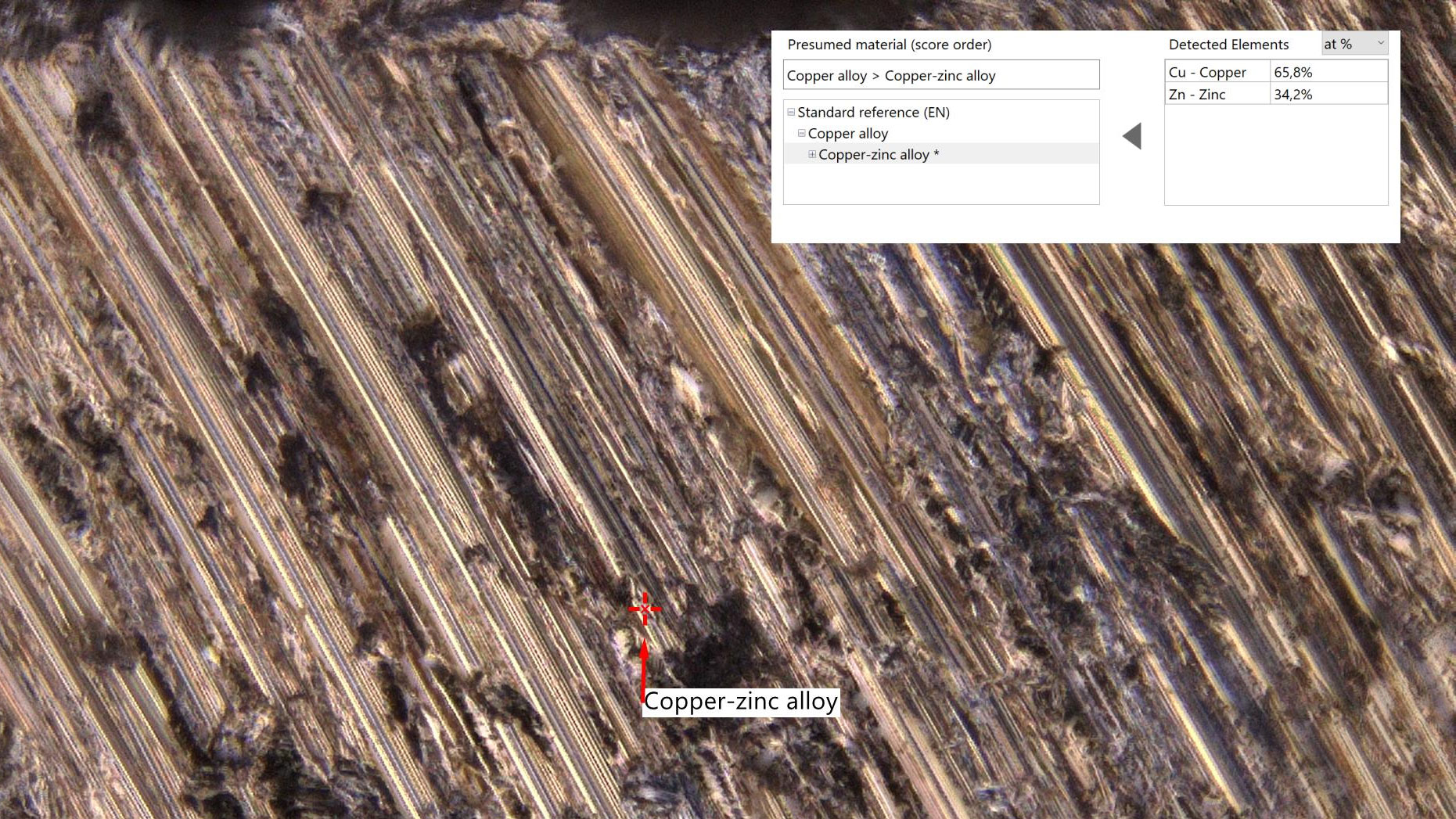Half of tested PC watercoolers don’t use the premium materials advertised, like copper: Report
Igor's Lab reckons the carelessness of AiO cooler brands is primarily to blame.

Veteran hardware reviewer Igor Wallossek has published an investigation into AiO CPU cooler radiator materials. Something must have got Wallossek’s spider senses tingling because his investigation into six branded designs uncovered three that were over-spec'd. By that, we mean half of the AiO brands sold radiators using different, cheaper materials than mentioned in their product data sheets, websites, or advertising. The most common switcheroo was advertising copper but instead using a copper/zinc alloy like brass.
Wallossek mentions in his eight pages of analysis that messages from readers sparked his interest in radiator materials. Some had complained about clogged pipes and tubes; others were concerned about unexplained corrosion. Thus, Wallossek’s materials investigations look not just at the radiator materials but at things like screws, nuts, channels, solder, factory liquids, and more.
In his intro, Wallossek details the material tests he leveraged during his work on this investigatory project. If you intend to criticize a PC components firm in any way, you have to be confident in your data. Thus, he also talks about statistical matters like rounding percentages and similar nuances. We also learn that, sadly, this kind of testing is destructive, with grinders, cutters, and other machinery required to get to the nitty-gritty.
Like Wallossek, we have decided to tabulate the findings for easy comparison. However, we have abridged the details to highlight his findings concisely. For the full results, please check out the source, which devotes a full page to each sample tested and offers a conclusion packed with comparisons.
|
Brand: model |
Observations |
|
Alphacool: NexXxoS ST30 Full Copper X-Flow 120mm |
Genuine copper radiator All material specs were accurate Soft screws |
| Aqua Computer: Airplex Radical 2/120, aluminum fins |
Genuine copper channels All material specs were accurate A fair offering |
|
Bykski: CR-RD120RC-TN-V2 , 120mm Radiator D30 V2 Full Copper |
Brass, not copper channels Alkaline liquid residues need flushing ROHS violation – leaded solder Soft screws and inserts |
|
EK Water Blocks: Quantum Surface P120M – Black |
Channels were brass, not 'Copper H90' Quality machining in evidence Alkaline liquid residues need flushing Soft screws |
|
Hardware Labs: Black Ice Nemesis GTS – 120 XFlow |
Completely brass, except cooling fins Functional but mediocre materials |
|
Watercool: Heatkiller Rad 120-S Black |
Brass channels, not copper Good screws and soldering |
For an example of the detail Wallossek went into with his material testing, please check out the table screenshot below. It shows an example spec vs. reality chart for the Watercool: Heatkiller Rad 120-S Black.
Remember, the above AiO cooler radiators weren't tested for performance; there are plenty of review sites that judge them by such metrics. Instead, Wallossek wanted to double-check that customers were getting the specs and materials they were paying for – and it doesn't look great for the brands tested so far, with few coming out unscathed.
Wallossek's strongest recommendations were delivered to the manufacturers, not to customers. He said many of them need to spend more time/effort on quality management and not rely on their OEMs for checks and tests. He doesn't go as far as suggesting inaccurate material descriptions are intentional; for now, he is mostly blaming carelessness. However, if AIO makers are warned and don't change, we can imagine they will face far more severe criticism.
Wallossek has already decided to expand his AiO investigations and says he has anonymously acquired another raft of products. Upcoming investigations will cover CPU cooler products made by Corsair, Thermaltake, and some lesser-known Chinese brands and OEMs.
Get Tom's Hardware's best news and in-depth reviews, straight to your inbox.

Mark Tyson is a news editor at Tom's Hardware. He enjoys covering the full breadth of PC tech; from business and semiconductor design to products approaching the edge of reason.
-
Notton I'm surprised they use pure copper for the radiator fins and cheap out elsewhere.Reply
Aluminum radiator fins would lower cost while not affecting performance by much. It won't touch water, so there is no worry of corrosion either. -
Dantte Reply
Actually, Aluminum fins would increase performance over copper. Copper is a great solid to solid conductor of heat, but Aluminum is far superior solid to air when it comes to heat, so having a Copper tube to Aluminum fin would work great.Notton said:I'm surprised they use pure copper for the radiator fins and cheap out elsewhere.
Aluminum radiator fins would lower cost while not affecting performance by much. It won't touch water, so there is no worry of corrosion either.
The catch here is the connection point between the materials; such as with an air cooling block, the fins are not soldered, they are physically 1 piece so the heat transferer efficiency is 100%, where as if you were to have a Cu block and Al fins soldered on, you would lose efficiency and counter act any gains from Al cooling fins. A radiator is a different animal, it cant be 1 piece, so Cu tube to Cu fins soldered on, vs Cu tube to Al fins soldered on the transfer efficiency is the same and Al takes the lead.
What surprises me is the EKWB, I always thought of them as the gold-standard and its clearly labeled on their website that tubes are CU H90. So for this to be brass, not only does it go against my perception of the company, this is a lawsuit (myself included as I have a Quantum P-series radiator.) Granted I havent had any issues and it works good, I never even paid attention to the details in the spec sheets, it is very annoying to read this. -
TechLurker Personally, I hope he also tests Blyski's luxury radiator lineup in the Granzon series. I'm using a pair of them (one with an integrated pump) due to the fact that at the time of build, the Airplex Radical radiators with a pump integrated wasn't available. Blyski insists that their Granzon are made to a higher quality than the regular radiators, so it'd be a valid thing to test.Reply -
hotaru251 I wonder if you could file class action lawsuit for these brands that are lying about the material (as there is fraud)Reply
You are paying for quality they aren't providing when they say they are. -
bavor "Igor Wallossek has published an investigation into AiO CPU cooler radiator materials" - Yet it shows custom open loop components in the comparison?Reply -
Alvar "Miles" Udell Replyhotaru251 said:I wonder if you could file class action lawsuit for these brands that are lying about the material (as there is fraud)
You are paying for quality they aren't providing when they say they are.
Everyone would get about $5 after the lawyers take half. -
junglist724 In the end as long as the they're not using materials that would result in harmful corrosion I'm not that bothered. The one Aqua Computer radiator that got the most praise from Igor is also one of the worst performing radiators on the market.Reply -
USAFRet Reply
"You" can't.hotaru251 said:I wonder if you could file class action lawsuit for these brands that are lying about the material (as there is fraud)
You are paying for quality they aren't providing when they say they are.
That requires a large legal team.
If successful, 6 years from now you get $4.24

